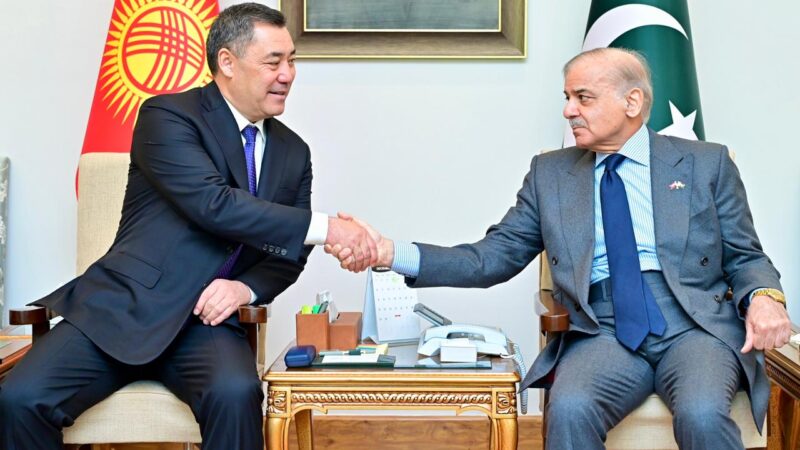By Farhan Ahmad
The Pakistan Stock Exchange sustains a distinctly bullish phase even after Pakistan-India and Iran-Israel discord. The Benchmark KSE-100 index touched all-time high at 126,718 points, closing the FY25 on a strong note. Amidst the tough geo-political situation in the region, PSX has maintained its momentum which reflects the accumulating economic and policy developments that drove investors confidence across the board. During the FY25, The Pakistan Stock Exchange gained over 60 percent which has not only caught attention from domestic investors but also drew renewed interest from local and international institutions who had largely stayed on the sidelines in recent years. This surge is based on tangible improvements in macroeconomics of the country, fiscal discipline and monetary policy recalibration. This raise in PSX is not backed by speculative behavior or sudden euphoria.
Federal government, in budget for FY26, has not introduced any abrupt or punitive taxations on capital market which has also fueled the market strength. In earlier years, after the budget announcements, market used to present steep corrections due to regulatory uncertainty but this year market participants largely viewed it as neutral to positive.
This time, it offered fiscal clarity, continuation of IMF’s policy roadmap, provision of targeted support to the export sector and construction-linked industries. More importantly, the government refrained from imposing new capital gains tax slabs or turnover-based taxes on brokerage activity, both of which had previously discouraged investor participation.
It was coupled with pivotal shift in monetary policy. State Bank of Pakistan has lowered policy rate for consecutive five months, bringing it down to 11 percent in May 2025, which marked a substantial easing cycle after years of tight monetary conditions.
With headline inflation falling to 3.5 percent in May and averaging around 4.6 percent for the fiscal year, the real interest rate has turned positive, restoring investor confidence in the SBP’s inflation targeting credibility. This easing cycle has triggered a reallocation of capital from fixed income instruments to equities, particularly by banks and mutual funds seeking higher returns. Sectors such as banking, fertilizer, and energy, known for strong dividend yields, are seeing renewed institutional interest.
The positive performance of the market must not be seen alone without IMF program. When Pakistan has successfully continued Extended Fund Facility, it has restored foreign investor’s trust and maintain stability in the external account. Pakistan has managed to meet critical IMF structural benchmark which includes rationalization of energy tariff, reduction in circular debt accumulation and commitment to privatize loss-making state-owned enterprises. The government’s willingness to offload strategic assets such as Pakistan International Airlines and several power distributions companies has signaled to investors that it is serious about long overdue reforms. This has created an enabling environment for sustainable market growth, where gains are supported by fundamental macroeconomic changes rather than speculative news flow.
One of the major factors behind this rally of the Pakistan Stock Exchange is improved depth and participation of the investors in the market. Daily average traded volumes have consistently remained above 100 million shares, and daily trading value has frequently crossed PKR 30 billion which reflects stronger institutional participation. The brokerage industry has also reported a sharp increase in new retail accounts that are driven largely by online onboarding and a growing middle-class interest in equities as a wealth creation vehicle. With declining returns on bank deposits and national savings schemes, more individuals are turning toward the stock market, which has outperformed nearly all other asset classes during this fiscal year.
Crucially, the market is still trading at deeply discounted valuations, with the KSE-100 index reflecting a price-to-earnings ratio of just 5x and a dividend yield of over 9 percent. This valuation gap compared to regional peers is now attracting foreign interest, especially in sectors with dollar linked revenues or strong export profiles. However, the market’s performance remains fragile and conditional. Any derailment in the reform process, political instability, or renewed external pressure on the rupee could quickly reverse gains. Investors are closely watching whether the government can maintain fiscal discipline without resorting to populist measures ahead of any political transitions.
The current rally at the PSX is not a speculative bubble but the result of a synchronized improvement in macroeconomic indicators, policy stability, and investor behavior. The market is responding positively to tangible signals such as falling inflation, easing interest rates, budgetary predictability, and adherence to IMF reforms. While risks remain, especially from external and political fronts, the underlying structure of the market has become more resilient. If the government manages to maintain this momentum, address energy sector inefficiencies, and push through with privatizations, the PSX could sustain its upward trend well into the next fiscal year, possibly positioning itself as the most attractive frontier market in the region.
The writer can be contacted at farhanahmadsdq@hotmail.com






